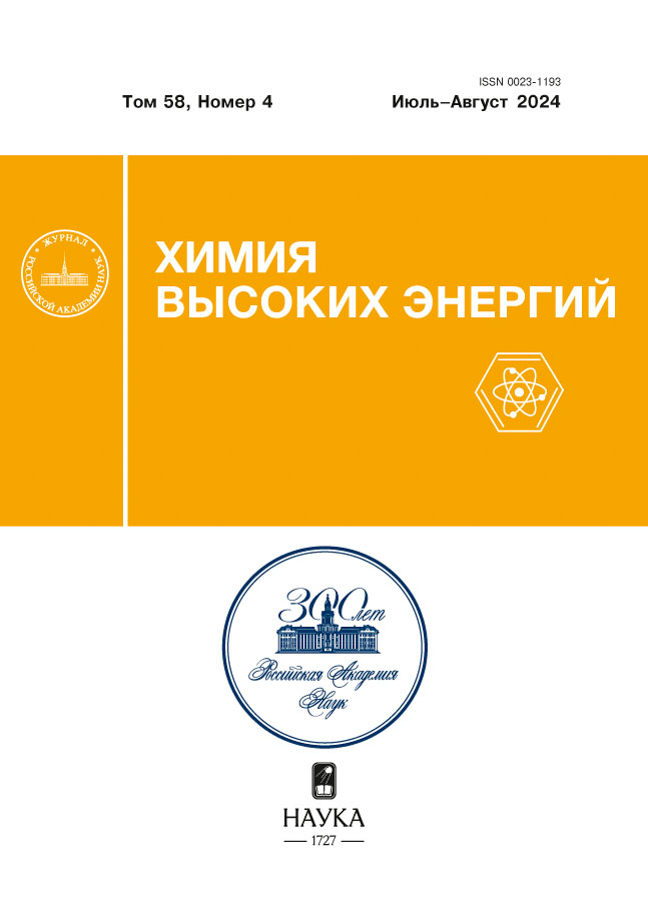Role of molecular nitrogen in the radiolysis of the primary coolant of a water-water energy reactor
- Authors: Grachev V.A.1, Bystrova O.S.1, Sazonov A.B.1
-
Affiliations:
- Kurchatov Institute
- Issue: Vol 58, No 4 (2024)
- Pages: 284-295
- Section: RADIATION CHEMISTRY
- URL: https://ruspoj.com/0023-1193/article/view/661403
- DOI: https://doi.org/10.31857/S0023119324040078
- EDN: https://elibrary.ru/TQBOKF
- ID: 661403
Cite item
Abstract
The results of modeling of radiation-chemical transformations in the coolant of the VVER primary circuit are presented. It is shown that under conditions of intensive irradiation molecular nitrogen dissolved in the coolant exhibits chemical activity. The reaction of N2 molecule with excited hydroxyl initiates the formation of ammonia and nitrous acid. Further decomposition of ammonia yields only oxidized forms of nitrogen, with N2 acting as an intermediate product. Maintenance of hydrogen and oxygen concentrations within the norms at ammonia water-chemical regime (WCR) appears to be possible only at constant dosing of NH3 and degassing of the coolant. On the contrary, in the case of WCR with dosing (at the initial moment) of H2 in the absence of perturbations the steady-state regime is quickly established, satisfying the requirements of the WCR norms for VVER. The difference between the two WCRs is due to the presence of nitrogen in the NH3 molecule and its transformations as an element, regardless of the initial chemical form.
Full Text
About the authors
V. A. Grachev
Kurchatov Institute
Author for correspondence.
Email: Grachev_VA@nrcki.ru
Russian Federation, Moscow
O. S. Bystrova
Kurchatov Institute
Email: Grachev_VA@nrcki.ru
Russian Federation, Moscow
A. B. Sazonov
Kurchatov Institute
Email: Grachev_VA@nrcki.ru
Russian Federation, Moscow
References
- Bulanov A.V., Kolesov B.I., Lukashenko M.L. et al. // Atomnaya Energiya. 2000. V. 88. No. 5. P. 353.
- Dmitriev M.T. // Journal of Applied Chemistry. 1963. V. 36. P. 1123.
- Shaede E.A., Edwards B.F.P., Walker D.C. // J. Geophys. Phys. Chem. 1970. V. 74. № 17. P. 3217.
- Kabakchi S.A., Arkhipov O.P., Verkhovskaya A.O., Lukashenko M.L. // VANT Physics of Nuclear Reactors. 2023. № 2. P. 105.
- Karasawa H., Ibe E., Uchida S., Etoh H., Yasuda T. // Radiat. Phys. Chem. 1991. V. 37. № 2. P. 193.
- Etoh Y., Karasawa H., Ibe E., et al. // Journal of Nuclear Science and Technology. 1987. V. 24. № 8. P. 672.
- Yamamoto Y., Suzuki T. // J. Phys. Phys. Chem. Lett. 2020. V. 11. P. 5510.
- German K.R. // J. Chem. Phys. 1975. V. 63. P. 5252.
- German K.R. // J. Chem. Phys. 1975. V. 62. P. 2584.
- Qin X., Zhang S.D. // Journal of the Korean Physical Society. 2014. V. 65. № 12. P. 2017.
- Zanganeh A.H., Fillion J.H., Ruiz J.et al. // J. Chem. Phys. 2000. V. 112. P. 5660.
- Hans A., Ozga C., Seide R. et al. // J. Phys. Phys. Chem., B. 2017, V. 121. № 10. P. 2326.
- Miyazaki T., Nagasaka S., Kamiya Y., Tanimura K. // J. Phys. Phys. Chem. 1993. V. 97. № 41. P. 10715.
- Mordaunt D.H., Ashfold M.N.R., Dixon R.N.. // J. Chem. Phys. 1994. V. 100. P. 7360.
- Grachev V.A., Sazonov A.B. // High Energy Chemistry. 2022. V. 56. № 2. P. 120.
- Egorov Yu.A. Fundamentals of Radiation Safety of Nuclear Power Plants. Moscow: Energoizdat, 1982. 272 p.
- Gordeev A.V., Ershov B.G. // Atomic Energy. 1992. V. 73. № 4. P. 322.
- Gordeev A.V., Ershov B.G. // Atomic Energy. 1992. V. 73. № 4. P. 325.
- Elliot. A.J., Chenier M.P., Ouellette D.C. // J. Chem. Chem. Soc., Faraday Trans. 1993. V. 89. № 8. P. 1193.
- Sunaryo G.R., Katsumura Y., Hiroishi D., Ishigure K. // Radiat. Phys. Chem. 1995. V. 45. № 1. P. 131.
- Kabakchi S.A. Mathematical modeling of radiation impact on water coolants of nuclear power plants. Moscow: Kurchatov Institute, 2018. 111 p.
- da Silva G., Dlugogorski B.Z., Kennedy E.M. // International Journal of Chemical Kinetics. 2007. V. 39. № 12. P. 645.
- da Silva G., Dlugogorski B.Z., Kennedy E.M. // Chem. Eng. Sci. 2006. V. 61. P. 3186.
- Habersbergerova A., Bartonicek B. // Nukleonika. 1981. V. 26. № 7–8. P.783.
- Dey G.R. // Radiat. Phys. Chem. 2011. V. 80. № 3. P. 394.
- Grachev V.A., Sazonov A.B., Bystrova O.S. // XXII International Conference of Young Specialists on Nuclear Power Plants. Collection of reports. Podolsk, JSC OKB GIDROPRESS, 2022. P. 128.
Supplementary files


















